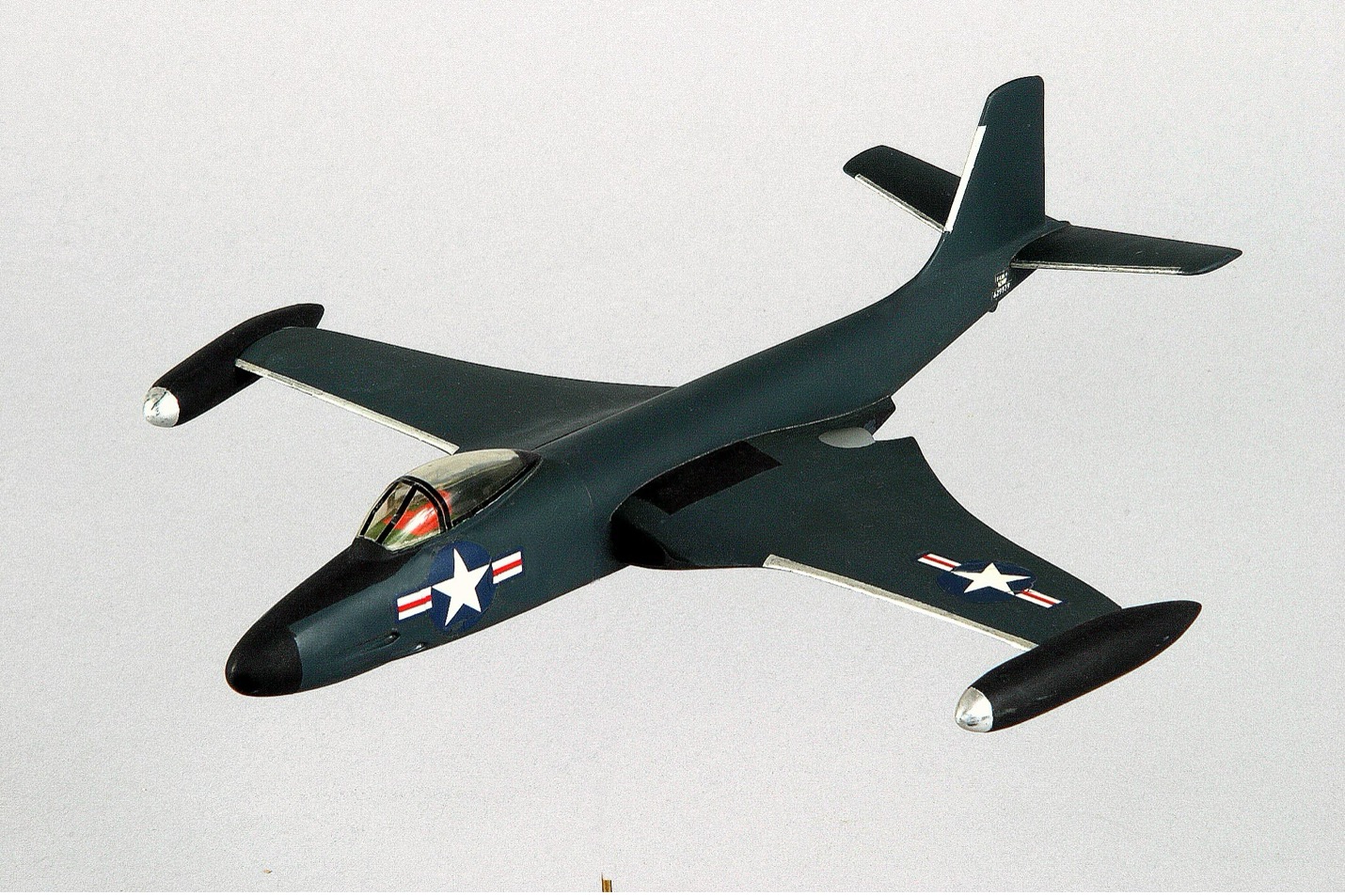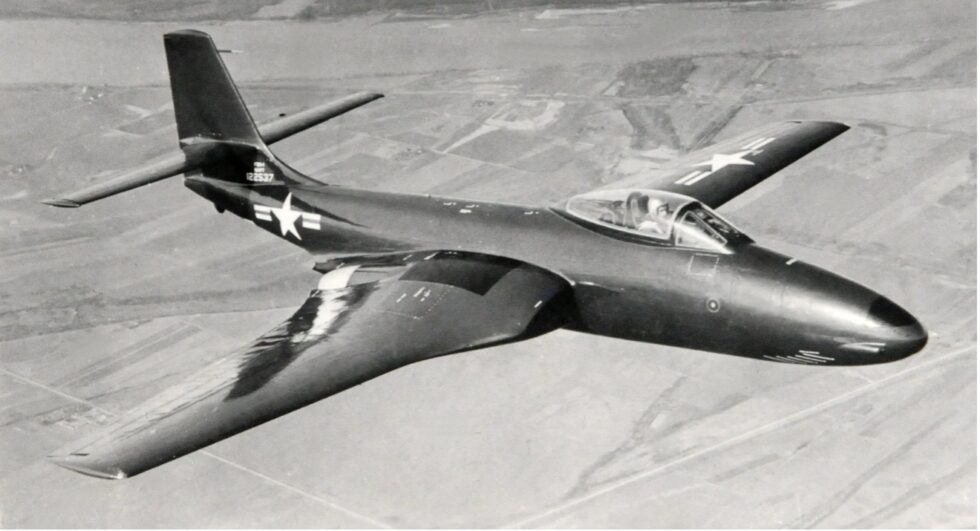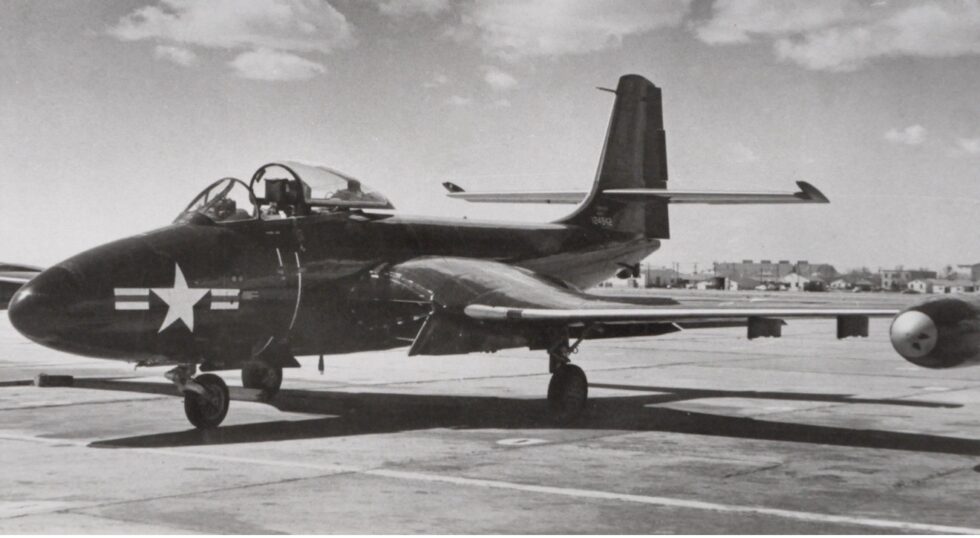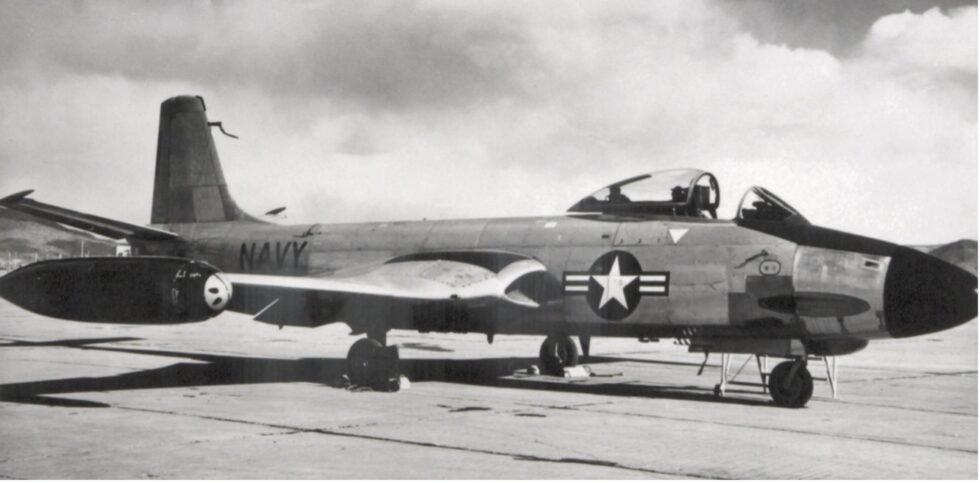USN NASWF McDonnell F2H-1 Banshee

McDonnell Co.
1/48
10/20/1965
historical significance
First Albuquerque Visit: 1951
Additional Information:
The McDonnell F2H Banshee is a single-seat carrier-based jet operated by United States Navy and Marine Corps. The Banshee was developed during the mid to late 1940s and was a derivative of the earlier F4 Phantom. The Banshee incorporated several recent innovations which included a pressurized cockpit and an ejection seat. On 11 January 1947, the first prototype performed its maiden flight and in August of 1948 the first initial production F2H-1 model was completed. The F2H-2 was the basis for three sub-variants; the nuclear-armed F2H-2B, the F2H-2N night fighter, and the F2H-2P photo reconnaissance aircraft.
Upon its introduction in late 1948, the Banshee proved to be almost 100 mph slower than the latest land-based fighters which was largely attributed to the use of a straight wing rather than a swept wing. Even with the deficiencies, several variants of the Banshee were produced for the US Navy. The F2H-2N was the first carrier-based jet-powered night fighter and the F2H-2P was the first jet-powered reconnaissance aircraft. The US Navy and Marine pilots often referred to the F2H as the “Banjo” and it was one of the primary American fighters used during the Korean War, typically being flown as an escort fighter and reconnaissance aircraft.
Albuquerque’s Kirtland Field was designated Kirtland Air Force Base in 1947, and the Armed Forces Special Weapons Project (AFSWP) operated on Sandia Base. When the United States Air Force established the Air Force Special Weapons Command at Kirtland Air Force Base in 1949, the United States Navy formed a detachment to investigate nuclear capabilities for naval aircraft and assist the AFSWP with naval equipment for demonstrations and training. The Naval Weapons Evaluation Facility (NWEF) operated through the Cold War investigating aircraft-weapon interfaces to provide United States Navy aircraft with nuclear weapons delivery capability.
In 1952 this detachment was designated the Naval Air Special Weapons Facility (NASWF) to conduct special weapons tests on the White Sands Missile Range and Tonopah Test Range in coordination with the United States Atomic Energy Commission. In March of 1961, the NASWF was re-designated the Naval Weapons Evaluation Facility (NWEF) and its mission was expanded to include safety studies on nuclear weapons. The aircraft used for NWEF testing were decorated with the NWEF thunderbird symbol and the NWEF detachment became known as the Rio Grande Navy by its sailors and civilians.
In 1992, with the consolidation of many naval activities and the drawdown of the U.S. defense budget, NWEF became part of the large, multisite Naval Air Warfare Center Weapons Division in China Lake. In 1993 the NWEF was decommissioned and became the first nuclear-weapons-related facility in the Free World to be shut down. As NWEF closed, it transferred some of its remaining people and functions to the China Lake site.
Several F2H-1 Banshees were assigned to the Naval Air Special Weapons Facility (NASWF) located on Kirtland Air Force Base in Albuquerque, New Mexico, for special weapons suitability tests beginning in 1951. Aircraft numbers Bu No’s 124940 and 124842 were used as chase and photo aircraft during weapons drop tests by other aircraft.



